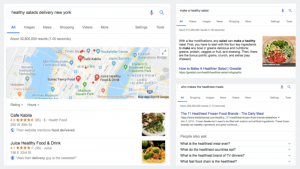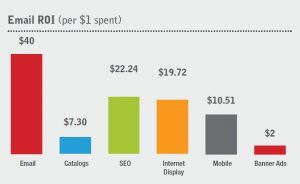
There is no real authority to concretely distinguish what birth date range signifies a “millennial”, or most other generations for that matter, as discussed in this 2014 article in The Atlantic. Though, most resources will say that Millennials were born between sometime in the early 1980s and the early 2000s.
Despite the lack of specificity around the exact date range, it’s safe to say that many millennials are entering the stage of life where they are beginning to “adult”; meaning they are starting to buy their own insurance, buy houses, and maybe—because millennials are typically eco-friendly—considering purchasing solar panels for their new houses.
In fact, mortgage industry software company Ellie Mae just launched its Ellie Mae Millennial TrackerTM in May—a new interactive online tool on millennial loan trends in the United States. In the press release, Joe Tyrrell, executive vice president of corporate strategy at Ellie Mae, states, “There are roughly 87 million would-be homebuyers in the millennial generation and 91 percent of them say they intend to own a home one day. Lenders must prepare today to meet their needs.”
For performance marketers in those industries that are now beginning to experience this influx of millennial consumers, this is a very different persona to understand how to market to effectively. And, it is crucial for brands to get up to speed quickly on how to win the business of new Millennial consumers. As the National Chamber Foundation states in its Millennial Generation Research Review paper, “Tapping into the millennial generation as they begin their adult lives, as with previous generations, is important for brands hoping to establish lifelong relationships with their customers. This is also important with millennials because they help set trends through social media.”
What do performance marketers need to consider when marketing to this segment?
It’s not surprising that now, more than ever, every generation is using mobile devices to do things that used to only be done on desktops 10 years ago. In certain industries, such as mortgage, it’s easy to see that millennials especially—who are now young professionals and ready to take the next step of purchasing a home—have grown up with mobile and do everything on their phones. It’s natural that they want to keep doing things on their phone.
In fact, an April 2016 survey by Forbes of nearly 500 millennial nominees for the magazine’s 30 Under 30 list revealed that only 1 percent of the blue-ribbon millennials prefer to handle their banking by phone and only 8 percent prefer to handle banking in person. Meanwhile, 52 percent prefer using a smartphone app and 38 percent prefer using the bank’s website to handle their banking.
When prior generations were at this same stage in life, it wasn’t even possible to do on a phone what can be done now. Generation Xers and the generations before them had to call a realtor and rely on that realtor to show them houses in person. And, through the realtor or their bank, they would sit down and talk with a loan officer to explore financing options.
Now consumers can do all their research online with sites like Zillow, Trulia, Realtor.com, and Redfin to see the homes that are on the market, easily filtering on the features that matter to you. And, it’s expected to expand this concept into looking at your mortgage options online, as well.
What You Need to Address Immediately
There are several specific things that need to be addressed when marketing to millennial consumers:
1. Be aware that this is a real and growing trend that you must tackle. This generation needs to be treated with very different strategies and approaches than what was effective with prior generations. You should leverage data to gain an in-depth understanding of the millennial persona and his buying behaviors.
2. Once you have a deep understanding of the millennial persona, you need to think about how to design your messaging and advertising strategies accordingly. You need to consider where this segment will be and be there. For example, millennials will be more likely than baby boomers to be on social media and on mobile, so it makes sense to put more spend toward digital and mobile marketing strategies.
3. Understand how this segment prefers to communicate. As with any demographic, you can’t just assume, so you should leverage data tools to determine your consumers’ preferred method of contact. If it’s an existing customer, you can ask in a survey. If it is a prospect, there are ways to use behavioral data to determine this. Based on their past behaviors, you can predict such things as whether or not they are more likely to respond to a phone call than an email.
Of course, there are some assumptions you can make and act on, based on the wealth of research and surveys available, such as that millennials are less likely to make phone calls as an early means of gathering information. So, having a chat tool on your website might be important to consider. Knowing they are using their mobile phones, be sure to have click-to-call capability on your website, to make it easy for them to decide to call you while they are looking at your site.
4. Where to find this target market is also important to your strategy. If you are putting ads in newspapers, you will not find millennials, because that’s not where they are. In fact, it only takes one ride on the subway to see that, 90% of people are looking at their phone, not a newspaper, millennial or not.
So, you know they are on their cell phone. But, next ask where are they going on that device? If they are on FB or Twitter or Instagram, that is where you should be putting your ads. Promoted social posts and listings are potential options that you should try, test, and measure to see what works to see what is most effective.
5. Like most consumers of any generation these days, millennials are more informed consumers. By the time they are at the buying decision stage, they have much more self-acquired information than buyers would have had 20 years ago, thanks to that newfangled thing known as the Internet. So, it’s important to know what resources they are turning to online.
Are they visiting your site to do their research? Are they visiting your competitors’ sites? How much time do they spend on these sites?
Are they visiting third-party lead generator sites? If you aren’t working with companies who can provide third party leads, you miss chances to reach those consumers using those sites for their research.
As it is true of any generation, what matters most is where the millennial consumer is in their journey. When you combine your knowledge of where your consumer is on his journey with knowledge of how to best communicate with and message to that consumer, you have a winning combination.
Business & Finance Articles on Business 2 Community(42)







